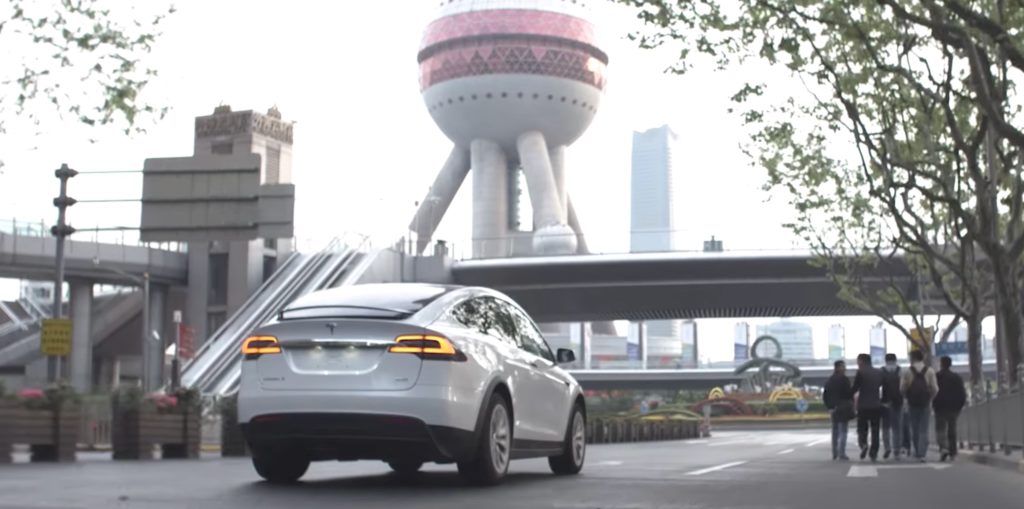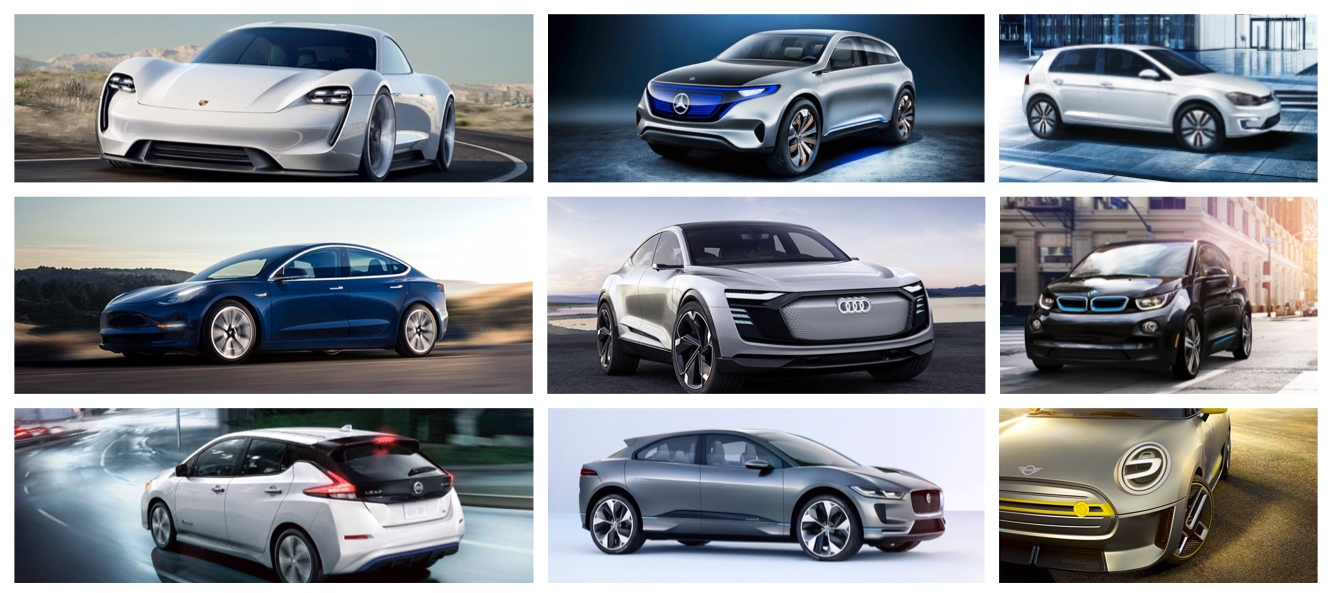
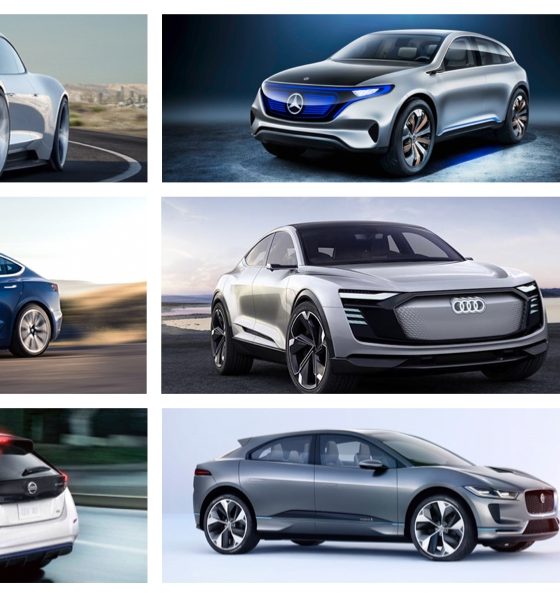
News
Automakers come to accept that the EV revolution has begun
The last several months have been busy in the electric vehicle revolution. Governments have been announcing their phase out plans for petrol vehicles and automakers have committed billions of dollars to electrification programs. At this point automakers are practically falling over each other racing to get out their announcements. How many electric vehicles they’re developing, how much they’re investing, are they going fully electrified, and when. Suddenly no one wants to be perceived as falling behind in this revolution. And why should they? Nokia and Blackberry can attest to what happens if you do.
In the past, established automakers have been very cautious with electrification, with many simply watching to see how the situation developed. Generally, their investments could be best described as vague or immaterial to their core business of making cars. That’s clearly changed – take a look at the timeline of announcements below.
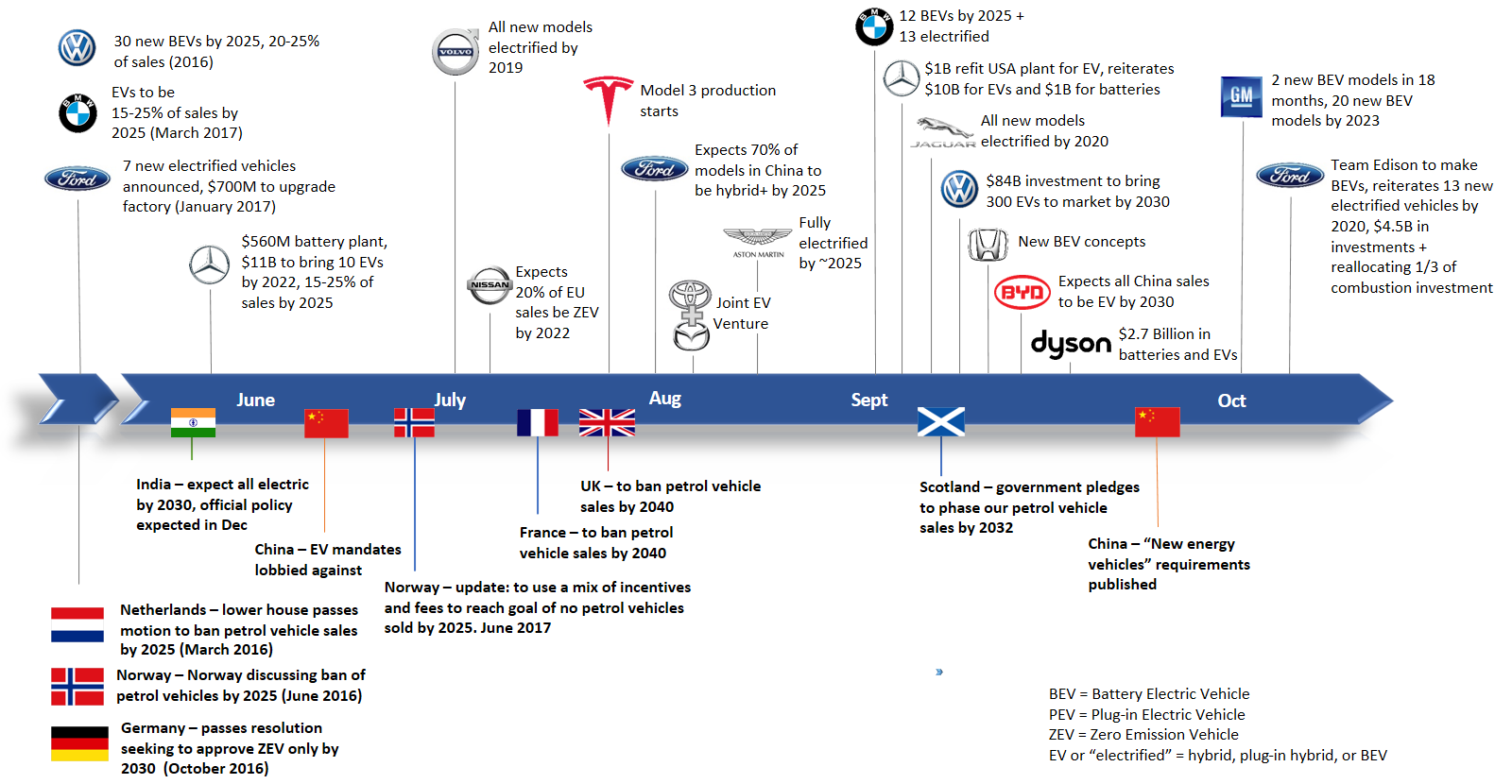
Taken as a whole these announcements are really quite striking. Most recently it was GM and Ford that released their competing declarations of electrification. GM with twenty new fully electric vehicles by 2023 and Ford quickly following up to say they had a new dedicated team for fully electric vehicles, while reiterating their previously committed $4.5 billion in investments for 13 new electrified vehicle options. Ford followed up the next day to say they were also diverting one third of their investments from combustion vehicle development.
The month prior was filled with even more announcements, including tweets between Elon Musk and Mercedes about the size of the latter’s investments. Volkswagen, BMW, Mercedes, Jaguar, Honda, BYD, and Dyson all made significant announcements about their EV programs that month, but it was Volvo’s “fully electrified” announcement that first caught the media’s attention back in July. It was a clever, if somewhat misleading PR move, but it did set important targets for their company and the competition. The fact that Tesla started producing their mass market Model 3 was almost lost amongst all this news. That’s an exaggeration of course, but only a year ago many believed their plans were impossible.
Government announcements have been another important part of the narrative, with targets that provide direction and impetus to the industry. Based on some of the lobbying it hasn’t been entirely welcome, but that’s to be expected. Anytime an entire country is talking about completely phasing out your current business model, it’s going give an industry pause. In this case there were multiple, with China, the UK, France, India, and several others weighing in with their plans to phase out combustion vehicles.
Looking at these announcements together suggests that a new phase in the electric vehicle revolution has begun. The fundamentals behind this shift are what I will argue here. My proposition is that the combined macro-economic drivers of regulation, competition, and market growth are pushing EVs to the mainstream. Be forewarned, it’s a long post, but analyzing any of these factors in isolation loses the bigger picture. Electric vehicles are coming, of that there can be no doubt.
Regulation, competition, and market growth.
You’ll notice the analysis below centers around plug-in electric vehicles (PEVs). Today a little more than 60% of new EV sales are pure battery electric vehicles (BEVs) and the rest are plug-in hybrid electric vehicles (PHEVs). PHEV’s are a transitionary technology, which currently offer some benefits that will disappear as battery costs continue to fall and range continues to increase. Note that the analysis doesn’t include hybrids without plugs, they’re old news. Also note that in talking about vehicles and vehicle sales, these are always in reference to passenger vehicles (i.e. no freight trucks). Annual passenger vehicles sales data was taken from the International Organization of Motor Vehicle Manufacturers and electric sales information is from the International Energy Agency.
Regulation:
The 2015 Paris climate agreement requires country specific greenhouse gas reductions by 2030 or sooner. As part of the agreement countries must also submit annual reports on their progress. Transport is a key part of each country’s emissions and it’s one that has a solution at hand, hence the plans to phase out combustion vehicles. France and UK announced for bans by 2040, Scotland by 2032, Netherlands 2025, Norway 2025, and India and China in development. There’s some subtlety to each. Norway for example is leaning towards economic levers to achieve their goals in lieu of outright restrictions, while India has said they expect all vehicles to be electric by 2030 without regulation being necessary, though their official policy is expected later this year.
Personally I tend to agree. I expect we will all be buying electric vehicles long before 2040 largely due to economics, especially with carbon pricing. That said, all of the government announcements are important. They provide both the public and automakers a framework in which to operate, while the more aggressive targets are actually moving the industry forward.
California and nine east coast states have long mandated a portion of sales be zero emission vehicles (ZEVs), administered through a credit system. The system gives partial credit to plug-in electric vehicles (PEVs) and more credits to long range zero emission vehicles (ZEVs). It’s basically the reason automakers have produced ZEVs in the USA. In quite possibly the biggest announcement of the year China is now doing something similar. They’ve mandated a ‘new energy vehicle’ credit requirement of 10% of sales in 2019 and 12% in 2020. Since one EV can be responsible for multiple credits it means that less than 12% of all vehicles sold will be required to be zero emission vehicles. For example, if the requirement was met with vehicles like the BMW i3, it would mean 4.6% of all vehicle sales in China would be ZEV in 2020, about 1.4 million that year. For reference there are about 2.5 million PEVs on the planet right now.
China is also looking at establishing a date for complete phase out of petrol vehicles, which has caught California’s attention. California is not eager to lose their leadership position in electric vehicles and is now looking to increase their own targets and establish their own timeline for complete phase out. I believe the quote from their governor was “Why haven’t we done something already?”. It seems that an EV target race has begun and that means mandated growth for the EV market.
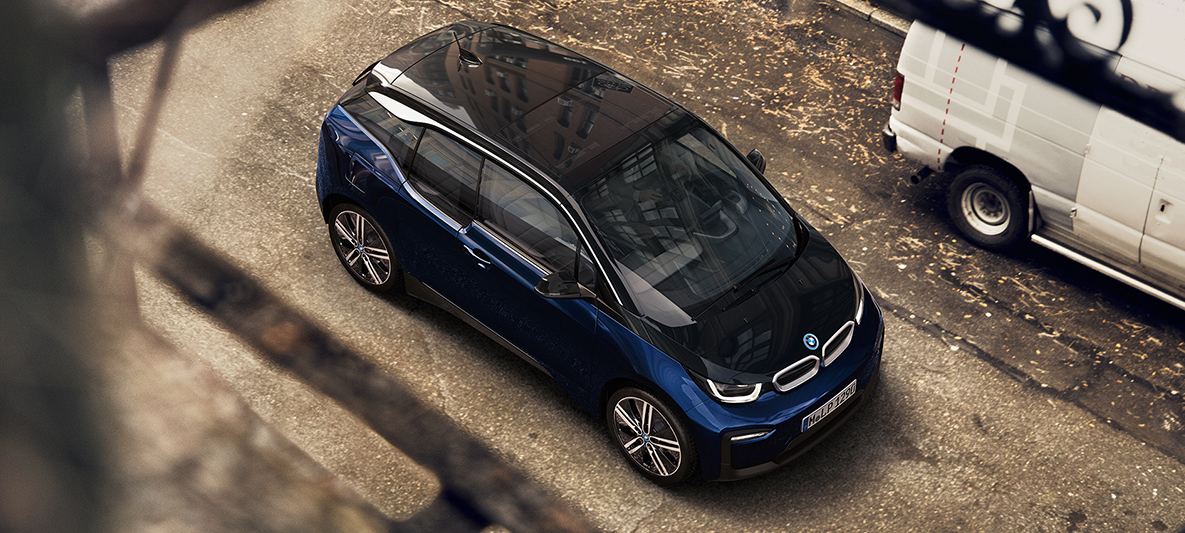
source: BMW
Market Growth:
This one has always been a bit of ‘chicken or the egg’ scenario. Historically demand for electric vehicles was low, which automakers referenced as the reason for their limited offerings. Others argued that there could be no demand when so few options were available, especially when those that did exist had such weird aesthetics (which was an effective way to prevent scavenging from more profitable combustion sales). Tesla flipped this around with their preorders of the Model 3 and showed everyone the latent demand to the tune of nearly 400,000 preorders. Other automakers took notice. BMW even started having widespread video presentations depicting the threat of Tesla to motivate their employees.
If you’ve only heard the rhetoric of how electric vehicles constitute a small fraction of the world’s annual sales, you might have missed something important. Exponential growth. Since 2012 growth of plug-in electric vehicles has been over 40% every year. Cumulatively that means 10x more PEVs will be sold in 2017 than 2012, as shown in the graph below.
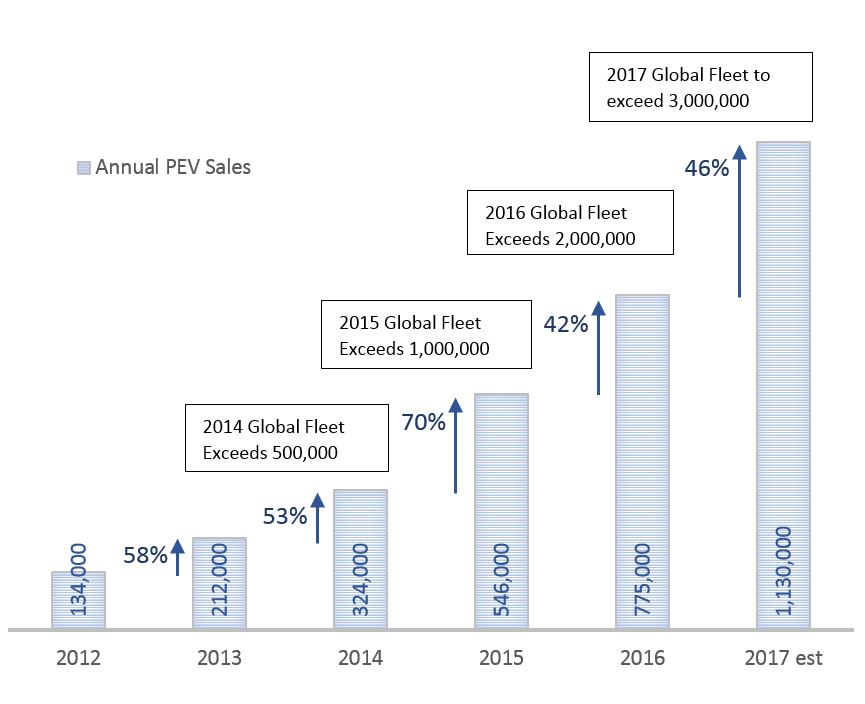
Historical data from the IEA, 2017 estimate from EVvolumes.com
Don’t get me wrong, the existing market share is almost laughably low at 1.1% worldwide (2016 data from the IEA), but over the last three years sales have grown at an average 54.6% compound annual growth rate (CAGR).
To illustrate the effect of exponential growth consider the following example about bacteria in a jar. If the number of bacteria doubles every minute and after 1 hour the jar is full of bacteria, that means at 59 minutes the jar is half-full, at 58 minutes ¼ full, at 57 minutes 1/8 full, etc. At 54 minutes that jar is only 1.6% full and everyone is thinking that bacterial will never fill the jar. It’s simplistic and exaggerated but that’s where we are today, at 54 minutes.
The example shows the power of exponential growth but also the challenge in forecasting it. Over the long term, small changes in annual growth rates can have big impacts. Solar power projections were notoriously underestimated and each year forecasts had to be revised upwards. That’s not to disparage the forecasters, it’s incredibly difficult to do what they do and certainly some caution in forecasting is warranted. But it is worth considering that electric vehicles may be in a similar situation. For example, Bloomberg New Energy Finance (BNEF) posted an EV outlook report in 2016, estimating that annual sales in 2040 would be 35% of all vehicles sold and the total PEV fleet would be 410 million. This year they revised those projections up, to 54% and 600 million. That’s 200 million more EVs, on a starting estimate of 410 million, after one year of new data. Will the next years’ forecasts also be revised upwards?
Shorter timeframes are usually more accurate, BNEF’s numbers indicate they expect approximately 2.5 million PEVs to be sold in 2020. That seems reasonable, but it would mean that PEV sales growth slows to 35% annually for the next few years. With more models coming that have better features and lower costs, and with governments now pushing the market with more aggressive targets, it seems unlikely growth will slow. So as an experiment what happens if the 54.6% growth rate over the last three years continues, to 2020 and 2025?
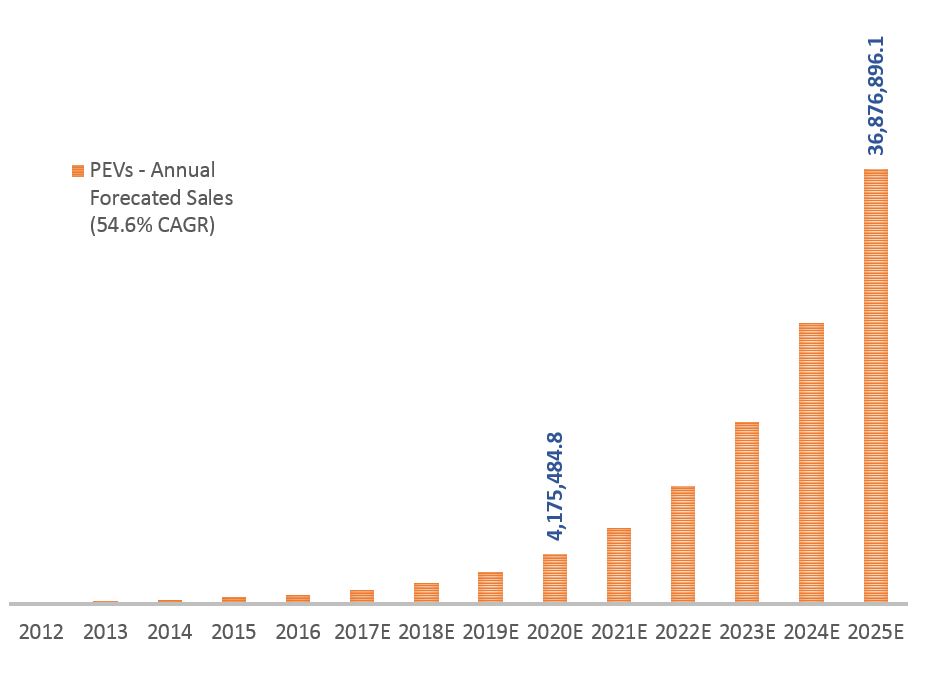 The impact would be impressive. The graph indicates that over 4 million PEVs would be sold in 2020, for 5% of total vehicle sales. That jumps to 37 million PEVs sold in 2025, nearly 40% of the total vehicle sales predicted. Contrast that with BNEF numbers, of 3% of sales in 2020 and 8% in 2025. Personally I think 8% is a low estimate for 2025, it works out to a compound annual growth rate of approximately 25%. Interestingly UBS increased their 2025 PEV estimate upwards by 50% this year (from 2016) to 14% of total sales – showing that short-term projections can be just as uncertain.
The impact would be impressive. The graph indicates that over 4 million PEVs would be sold in 2020, for 5% of total vehicle sales. That jumps to 37 million PEVs sold in 2025, nearly 40% of the total vehicle sales predicted. Contrast that with BNEF numbers, of 3% of sales in 2020 and 8% in 2025. Personally I think 8% is a low estimate for 2025, it works out to a compound annual growth rate of approximately 25%. Interestingly UBS increased their 2025 PEV estimate upwards by 50% this year (from 2016) to 14% of total sales – showing that short-term projections can be just as uncertain.
Perhaps 54.6% isn’t feasible, although Tesla has nearly managed it with a 47% growth rate since 2013. They did this while building up their staff, infrastructure, technology, and procedures virtually from scratch all at the same time. It’s also worth considering the history of smartphones. Globally smartphone sales grew at a rate of 46.4% year over year for ten years from 2004 to 2014, growing from sales of 27 million a year to over a billion. It was even more dramatic in China, where smartphone users accounted for about 5% of mobile subscribers in 2010 but were 70% by 2015 (Statista). That’s in just 5 years.
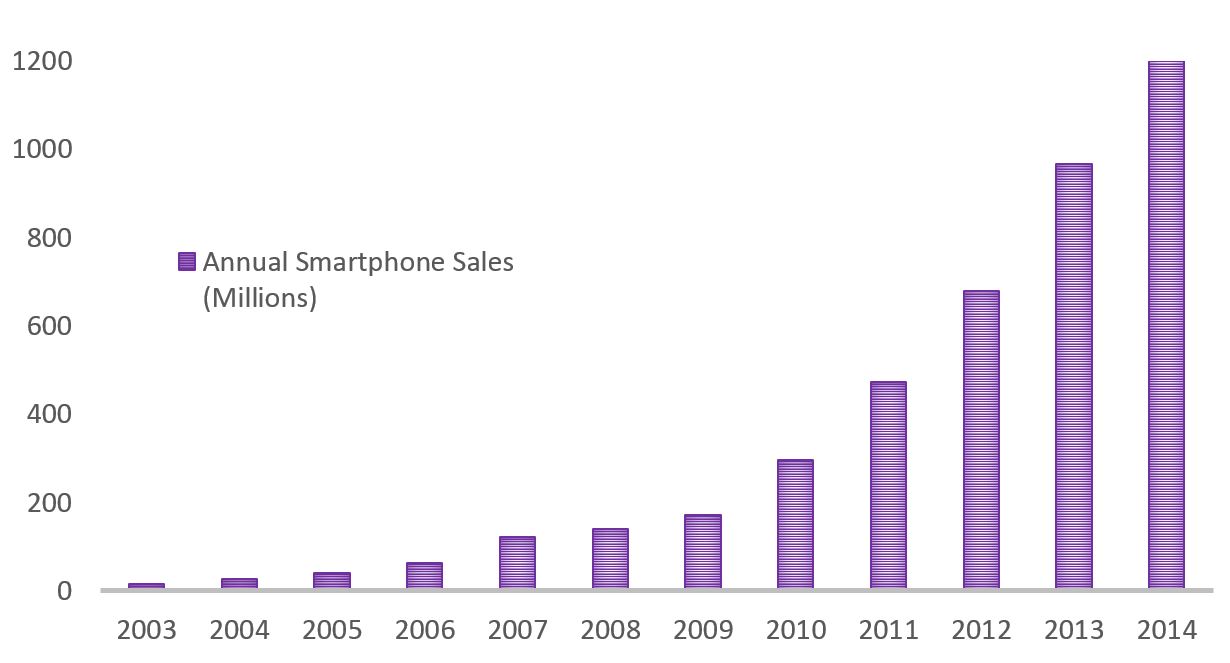
Data from www.gartner.com
Granted smartphones are not cars. The average smartphone costs orders or magnitude less and is traded in every two years, while the average car is traded in every 6.5 years (in the USA). A smartphone apparently has an average total lifespan of 4.7 years and a car can last to ~200,000 miles, approximately 15 years of average driving.
But electric cars do offer something cell phones never have. A lower cost. Cell phones provide a wealth of new functionality in our lives, but generally at a premium. Today, electric cars already cost less to operate than combustion vehicles, by 2018 they are expected to reach cost parity on total cost of ownership (UBS report), and by 2025 Bloomberg expects them to cost less upfront than combustion vehicles. That’s battery only electric vehicles (BEVs). Perhaps the changeover is longer than it was for cellphones, but once BEVs have an upfront cost less than petrol, why would anyone buy anything else?
Competition:
More and more manufacturers are entering the electric vehicle field with legitimate programs and their EVs are getting excellent reviews. At the end of 2016 the Chevy Bolt came out and won the North American and Motor Trend car of the year awards. Be prepared to see future EVs dominate the awards. VW already has a new e-Golf, Nissan a new Leaf, BMW an updated i3, Hyundai released their Ionic, and Audi, Porsche, and Jaguar are all coming out with pure EV models in 2018. Then there are the massive “electrification” shifts from the likes of Mercedes, BWM, Volvo, Austin Martin, VW, Ford, GM, and others. All now committing to reshaping their companies and the industry by moving to electric vehicles. There’s also that company Tesla which started making their game changing Model 3. Suddenly there’s a lot of competition and if your company isn’t one of those competing…. what are you doing? Those automakers on the sidelines are starting to look obsolete and it’s a short road from obsolete to ‘out of business’. 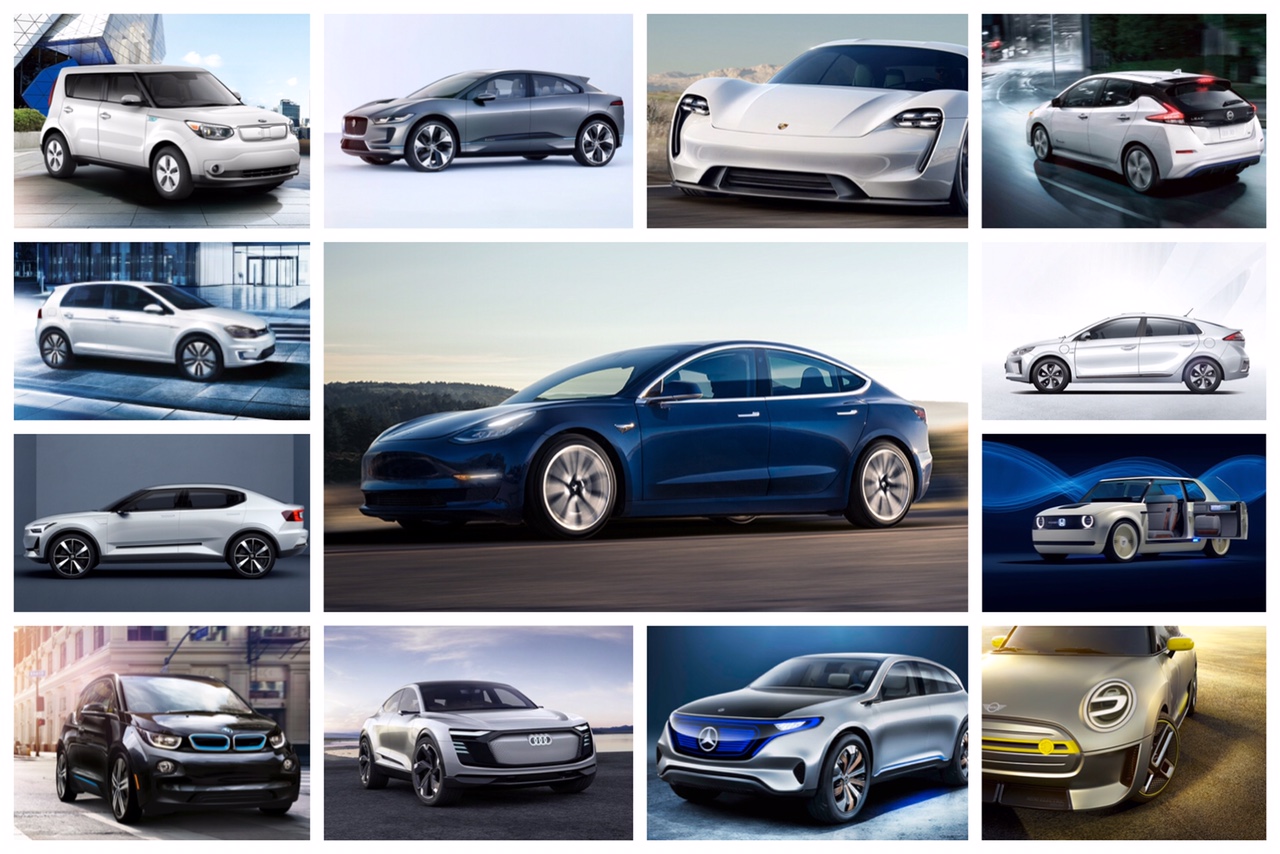
With automakers and governments committing to electrification of vehicles, we are going to see a significant ramp up in the electric vehicle market. More plug-in options are coming out, billions are being invested, and governments are seriously planning the end of combustion vehicles. It really is a paradigm shift. In large part we have Tesla to thank. If they hadn’t shown the world what was possible, who knows when this would have happened. Certainly the future would be a bit darker.

Elon Musk
Starlink passes 9 million active customers just weeks after hitting 8 million
The milestone highlights the accelerating growth of Starlink, which has now been adding over 20,000 new users per day.

SpaceX’s Starlink satellite internet service has continued its rapid global expansion, surpassing 9 million active customers just weeks after crossing the 8 million mark.
The milestone highlights the accelerating growth of Starlink, which has now been adding over 20,000 new users per day.
9 million customers
In a post on X, SpaceX stated that Starlink now serves over 9 million active users across 155 countries, territories, and markets. The company reached 8 million customers in early November, meaning it added roughly 1 million subscribers in under seven weeks, or about 21,275 new users on average per day.
“Starlink is connecting more than 9M active customers with high-speed internet across 155 countries, territories, and many other markets,” Starlink wrote in a post on its official X account. SpaceX President Gwynne Shotwell also celebrated the milestone on X. “A huge thank you to all of our customers and congrats to the Starlink team for such an incredible product,” she wrote.
That growth rate reflects both rising demand for broadband in underserved regions and Starlink’s expanding satellite constellation, which now includes more than 9,000 low-Earth-orbit satellites designed to deliver high-speed, low-latency internet worldwide.
Starlink’s momentum
Starlink’s momentum has been building up. SpaceX reported 4.6 million Starlink customers in December 2024, followed by 7 million by August 2025, and 8 million customers in November. Independent data also suggests Starlink usage is rising sharply, with Cloudflare reporting that global web traffic from Starlink users more than doubled in 2025, as noted in an Insider report.
Starlink’s momentum is increasingly tied to SpaceX’s broader financial outlook. Elon Musk has said the satellite network is “by far” the company’s largest revenue driver, and reports suggest SpaceX may be positioning itself for an initial public offering as soon as next year, with valuations estimated as high as $1.5 trillion. Musk has also suggested in the past that Starlink could have its own IPO in the future.
News
NVIDIA Director of Robotics: Tesla FSD v14 is the first AI to pass the “Physical Turing Test”
After testing FSD v14, Fan stated that his experience with FSD felt magical at first, but it soon started to feel like a routine.

NVIDIA Director of Robotics Jim Fan has praised Tesla’s Full Self-Driving (Supervised) v14 as the first AI to pass what he described as a “Physical Turing Test.”
After testing FSD v14, Fan stated that his experience with FSD felt magical at first, but it soon started to feel like a routine. And just like smartphones today, removing it now would “actively hurt.”
Jim Fan’s hands-on FSD v14 impressions
Fan, a leading researcher in embodied AI who is currently solving Physical AI at NVIDIA and spearheading the company’s Project GR00T initiative, noted that he actually was late to the Tesla game. He was, however, one of the first to try out FSD v14.
“I was very late to own a Tesla but among the earliest to try out FSD v14. It’s perhaps the first time I experience an AI that passes the Physical Turing Test: after a long day at work, you press a button, lay back, and couldn’t tell if a neural net or a human drove you home,” Fan wrote in a post on X.
Fan added: “Despite knowing exactly how robot learning works, I still find it magical watching the steering wheel turn by itself. First it feels surreal, next it becomes routine. Then, like the smartphone, taking it away actively hurts. This is how humanity gets rewired and glued to god-like technologies.”
The Physical Turing Test
The original Turing Test was conceived by Alan Turing in 1950, and it was aimed at determining if a machine could exhibit behavior that is equivalent to or indistinguishable from a human. By focusing on text-based conversations, the original Turing Test set a high bar for natural language processing and machine learning.
This test has been passed by today’s large language models. However, the capability to converse in a humanlike manner is a completely different challenge from performing real-world problem-solving or physical interactions. Thus, Fan introduced the Physical Turing Test, which challenges AI systems to demonstrate intelligence through physical actions.
Based on Fan’s comments, Tesla has demonstrated these intelligent physical actions with FSD v14. Elon Musk agreed with the NVIDIA executive, stating in a post on X that with FSD v14, “you can sense the sentience maturing.” Musk also praised Tesla AI, calling it the best “real-world AI” today.
News
Tesla AI team burns the Christmas midnight oil by releasing FSD v14.2.2.1
The update was released just a day after FSD v14.2.2 started rolling out to customers.

Tesla is burning the midnight oil this Christmas, with the Tesla AI team quietly rolling out Full Self-Driving (Supervised) v14.2.2.1 just a day after FSD v14.2.2 started rolling out to customers.
Tesla owner shares insights on FSD v14.2.2.1
Longtime Tesla owner and FSD tester @BLKMDL3 shared some insights following several drives with FSD v14.2.2.1 in rainy Los Angeles conditions with standing water and faded lane lines. He reported zero steering hesitation or stutter, confident lane changes, and maneuvers executed with precision that evoked the performance of Tesla’s driverless Robotaxis in Austin.
Parking performance impressed, with most spots nailed perfectly, including tight, sharp turns, in single attempts without shaky steering. One minor offset happened only due to another vehicle that was parked over the line, which FSD accommodated by a few extra inches. In rain that typically erases road markings, FSD visualized lanes and turn lines better than humans, positioning itself flawlessly when entering new streets as well.
“Took it up a dark, wet, and twisty canyon road up and down the hill tonight and it went very well as to be expected. Stayed centered in the lane, kept speed well and gives a confidence inspiring steering feel where it handles these curvy roads better than the majority of human drivers,” the Tesla owner wrote in a post on X.
Tesla’s FSD v14.2.2 update
Just a day before FSD v14.2.2.1’s release, Tesla rolled out FSD v14.2.2, which was focused on smoother real-world performance, better obstacle awareness, and precise end-of-trip routing. According to the update’s release notes, FSD v14.2.2 upgrades the vision encoder neural network with higher resolution features, enhancing detection of emergency vehicles, road obstacles, and human gestures.
New Arrival Options also allowed users to select preferred drop-off styles, such as Parking Lot, Street, Driveway, Parking Garage, or Curbside, with the navigation pin automatically adjusting to the ideal spot. Other refinements include pulling over for emergency vehicles, real-time vision-based detours for blocked roads, improved gate and debris handling, and Speed Profiles for customized driving styles.
